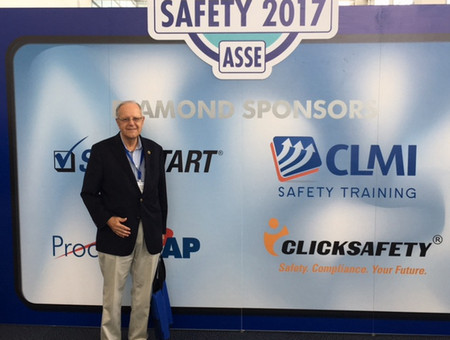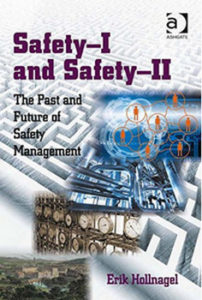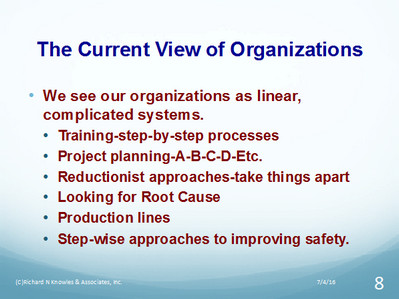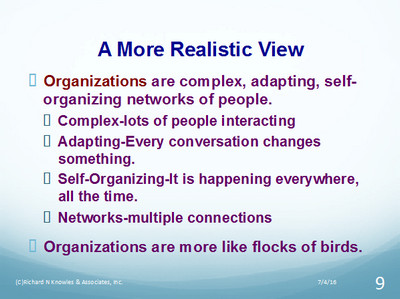 In 2001, Jim C. Collins wrote the best-selling management book, Good to Great: Why Some Companies Make the Leap…and Others Don’t. It described how companies transition from being good companies to great companies and how most companies fail to make that transition. The author found that focused leadership, clear expectations and alignment, and staying true to their field of major competence was key. There were other factors about greatness that showed up too – like Leaders being humble, and high employee engagement – employees being in tune with the company’s purpose, mission, endeavors, goals – not just the business side of things, but on the people side of the enterprise. Line organizations integrated information; people were involved, included and respected – because getting the right people in the right places was deemed as essential too. Entire organizations were communicating, collaborative, and cooperating.
In 2001, Jim C. Collins wrote the best-selling management book, Good to Great: Why Some Companies Make the Leap…and Others Don’t. It described how companies transition from being good companies to great companies and how most companies fail to make that transition. The author found that focused leadership, clear expectations and alignment, and staying true to their field of major competence was key. There were other factors about greatness that showed up too – like Leaders being humble, and high employee engagement – employees being in tune with the company’s purpose, mission, endeavors, goals – not just the business side of things, but on the people side of the enterprise. Line organizations integrated information; people were involved, included and respected – because getting the right people in the right places was deemed as essential too. Entire organizations were communicating, collaborative, and cooperating.
How are things inside your organization? Inside your work team? What needs to happen as you move forward into the New Year so that your workplace can move into greatness? So that a year from now, you’re not scratching your head wondering why you didn’t make much progress toward greatness?
Richard N. Knowles & Associates can help you with continuous improvement. Whether it be increasing your effectiveness, leadership, safety, quality or all of the above. Give us a call and we’ll share how (716-622-6467). It’s worth adding here, that Workplace Violence, including bad behaviors, incivilities, bullying, harassment, and deeper dysfunctions like vengefulness, violence – even homicide, certainly does NOT fit with good or great companies. These are inside-cultural aspects that show up big time when supervisors, teams, leaders, organizations are not principle-based in their leading, and when communication, collaboration, cooperation are absent. We can help you here too.
Click here to read an article Claire wrote, It’s the Simple Things that Count…What Leadership needs to Know & Do NOW to Thwart Incivilities, Bullying, Harassment, & Workplace Violence.
 Changes in our workplaces keep coming fast and furiously. A recent report released by Price-Waterhouse-Coopers indicates that by 2030 the pressure on workers to perform will be huge. Organizations will be using all sorts of ways to track performance…even putting chips under their workers skin to look at location, performance, health and wellness! They may be tracking safety performance as well. Managers will need to be having “mature conversations” with the people about all this change and the feeling of threat this creates for their people and their jobs. The pressure to keep improving skills and performance continues to increase.
Changes in our workplaces keep coming fast and furiously. A recent report released by Price-Waterhouse-Coopers indicates that by 2030 the pressure on workers to perform will be huge. Organizations will be using all sorts of ways to track performance…even putting chips under their workers skin to look at location, performance, health and wellness! They may be tracking safety performance as well. Managers will need to be having “mature conversations” with the people about all this change and the feeling of threat this creates for their people and their jobs. The pressure to keep improving skills and performance continues to increase.
 The American Society for Safety Engineers (soon to be The American Society for Safety Professionals) in Denver, Colorado, on June 19-22, 2017, was attended by about 5,000 people. This was a record for attendance. There were lots of papers and a huge trade show exhibit. I never saw so much safety equipment and other offerings.
The American Society for Safety Engineers (soon to be The American Society for Safety Professionals) in Denver, Colorado, on June 19-22, 2017, was attended by about 5,000 people. This was a record for attendance. There were lots of papers and a huge trade show exhibit. I never saw so much safety equipment and other offerings.
 As the snow begins to melt and the spring winds arrive, it is time for cleaning up the place. Mud season is upon us as the snow melts. All sorts of curious things emerge from the melting piles of snow; stuff that was covered up and lost. (Just imagine: Years ago the settlers kept their animals sheltered next to their houses or barns attached to their houses so that they could care for them when the winter cold set in. They really had to do the spring-cleaning!)
As the snow begins to melt and the spring winds arrive, it is time for cleaning up the place. Mud season is upon us as the snow melts. All sorts of curious things emerge from the melting piles of snow; stuff that was covered up and lost. (Just imagine: Years ago the settlers kept their animals sheltered next to their houses or barns attached to their houses so that they could care for them when the winter cold set in. They really had to do the spring-cleaning!)
 Our new year is full of opportunities, dark clouds and unknowns. The world is full of strife of all sorts. Our political situation here in the U.S. is full of hope, tension, noise, and unknowns. So many people are screaming about their opinions that it is almost impossible to hear. I get so tired of it that I often just quit trying to listen. That is probably a mistake for me to do that; we are all connected and I can’t just go away and hide. None of us can do that.
Our new year is full of opportunities, dark clouds and unknowns. The world is full of strife of all sorts. Our political situation here in the U.S. is full of hope, tension, noise, and unknowns. So many people are screaming about their opinions that it is almost impossible to hear. I get so tired of it that I often just quit trying to listen. That is probably a mistake for me to do that; we are all connected and I can’t just go away and hide. None of us can do that. As we bring this sort of thinking and being together into our workplaces, we can seek ways to improve our safety performance and business results. I have found over and over that we can vastly improve our safety and business performance when we share information together, listen for understanding, develop trust among us and see how well are all contributing, solutions emerge. When we help to change the behavior of bullies of get them out of the work place, we get even better.
As we bring this sort of thinking and being together into our workplaces, we can seek ways to improve our safety performance and business results. I have found over and over that we can vastly improve our safety and business performance when we share information together, listen for understanding, develop trust among us and see how well are all contributing, solutions emerge. When we help to change the behavior of bullies of get them out of the work place, we get even better.
 As this year comes to an end, we will be looking at our overall performance to see how we did and to plan for 2017. We will usually look at our injury statistics like the total recordable injury rate and try to determine how we performed. Often quite independently, others will look at other performance indicators to see how they came out. We act as if these are independent of each other, but in our organizations everything is connected so all aspects of performance influence each other. Everything happens through the people. All the parts are interconnected. Excellence in safety performance is strongly related to our total performance because it all works through the will of the people.
As this year comes to an end, we will be looking at our overall performance to see how we did and to plan for 2017. We will usually look at our injury statistics like the total recordable injury rate and try to determine how we performed. Often quite independently, others will look at other performance indicators to see how they came out. We act as if these are independent of each other, but in our organizations everything is connected so all aspects of performance influence each other. Everything happens through the people. All the parts are interconnected. Excellence in safety performance is strongly related to our total performance because it all works through the will of the people. Work-as-imagined and work-as-done are ideas developed by Erik Hollnagel in his book, Safety-I and Safety-II (2014. Ashgate Publishing Ltd., UK). Safety I is our traditional top-down management approach to safety management where rules and procedures are issued by those far from the actual work. This is like the approach discussed in the proceeding paragraph. I think that a lot of people are trying to do good safety work from the Safety I perspective, but the results are not improving fast enough.
Work-as-imagined and work-as-done are ideas developed by Erik Hollnagel in his book, Safety-I and Safety-II (2014. Ashgate Publishing Ltd., UK). Safety I is our traditional top-down management approach to safety management where rules and procedures are issued by those far from the actual work. This is like the approach discussed in the proceeding paragraph. I think that a lot of people are trying to do good safety work from the Safety I perspective, but the results are not improving fast enough. A recent article in the October 13, 2016
A recent article in the October 13, 2016  This story illustrates so many of the changing conditions and people involved in our work places. Most of our companies do a good job in risk assessments and developing safe working procedures. However, this planning often takes place away from the actual location where the work will be done. This is sometimes called the “blunt end” of the safety process where the people doing the planning do not understand what happens in the work at “sharp-end” where conditions and demands may be quite different, and where most of the injuries happen.
This story illustrates so many of the changing conditions and people involved in our work places. Most of our companies do a good job in risk assessments and developing safe working procedures. However, this planning often takes place away from the actual location where the work will be done. This is sometimes called the “blunt end” of the safety process where the people doing the planning do not understand what happens in the work at “sharp-end” where conditions and demands may be quite different, and where most of the injuries happen.


 For our workplaces, this is about the way we think about safety, the way we engage around safety, and the way we bring a third unifying force to the whole culture of safety.It’s the missing link in our respective workplaces. Without it, we tend to stay engulfed in a culture of compliance, yet despite trying and trying, we never reach excellence. Without it, we keep repeating the same mistakes – round and round we go.
For our workplaces, this is about the way we think about safety, the way we engage around safety, and the way we bring a third unifying force to the whole culture of safety.It’s the missing link in our respective workplaces. Without it, we tend to stay engulfed in a culture of compliance, yet despite trying and trying, we never reach excellence. Without it, we keep repeating the same mistakes – round and round we go. I spoke about Partner-Centered Safety™ and the importance of this as the quickest way to achieve sustainable safety excellence. As many of you know, I have written and spoken about this many times over the last several years. The information and data I share clearly shows that this approach to leading safety is very powerful, producing improved results quite quickly. Many of you have seen the terrific results the people at the DuPont, Belle Plant achieved. This approach has a very strong scientific basis in complex adaptive systems theory.
I spoke about Partner-Centered Safety™ and the importance of this as the quickest way to achieve sustainable safety excellence. As many of you know, I have written and spoken about this many times over the last several years. The information and data I share clearly shows that this approach to leading safety is very powerful, producing improved results quite quickly. Many of you have seen the terrific results the people at the DuPont, Belle Plant achieved. This approach has a very strong scientific basis in complex adaptive systems theory.





